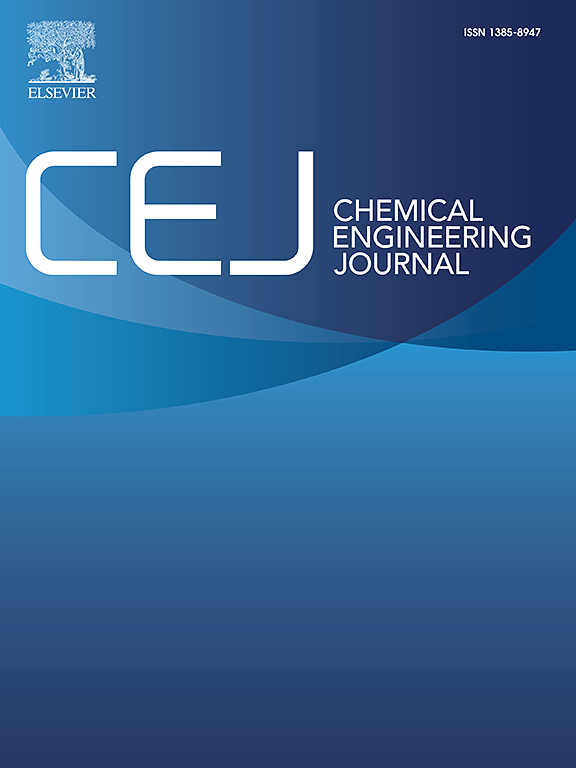Is the sacrificial agent really just a sacrificial agent? A case study on the photocatalytic reduction of U(VI) by alcohols
IF 13.3
1区 工程技术
Q1 ENGINEERING, CHEMICAL
引用次数: 4
Abstract
Although organic sacrificial agents are often used to improve the efficiency of photocatalytic reactions, the impact of their existence on the performance evaluation of photocatalysts has not been analyzed yet. In this study, to clearly understand the role of organic sacrificial agents in the photocatalytic process, the photocatalytic reduction of hexavalent uranium (U(VI)) by alcohols is systematically analyzed. The results reveal that under the conditions of pH 5, nitrogen atmosphere, visible light irradiation, and no photocatalyst, the alcohol sacrificial agents can directly reduce U(VI) with efficiencies as high as 98%. Uranium dioxide, formaldehyde, and hydrogen ion are identified as the final products of the photocatalytic reaction, and the reaction mechanism is proposed based on the results of electron paramagnetic resonance (EPR) spectroscopy. Accordingly, it is inferred that alcohol as an organic sacrificial agent markedly interferes with the performance evaluation of photocatalysts during the photocatalytic reduction of U(VI). Overall, this study provides valuable insights into the actual role of sacrificial agents in the photocatalytic reduction process.牺牲剂真的只是一个牺牲剂吗?醇光催化还原U(VI)的实验研究
虽然有机牺牲剂常用于提高光催化反应效率,但其存在对光催化剂性能评价的影响尚未得到分析。本研究为明确有机牺牲剂在光催化过程中的作用,对醇光催化还原六价铀(U(VI))进行了系统分析。结果表明,在pH为5、氮气气氛、可见光照射、无光催化剂的条件下,醇类牺牲剂可直接还原U(VI),效率高达98%。确定了二氧化铀、甲醛和氢离子是光催化反应的最终产物,并根据电子顺磁共振(EPR)谱分析结果提出了反应机理。由此推断,在光催化还原U(VI)过程中,醇作为有机牺牲剂明显干扰光催化剂的性能评价。总的来说,这项研究为牺牲剂在光催化还原过程中的实际作用提供了有价值的见解。
本文章由计算机程序翻译,如有差异,请以英文原文为准。
求助全文
约1分钟内获得全文
求助全文
来源期刊

Chemical Engineering Journal
工程技术-工程:化工
CiteScore
21.70
自引率
9.30%
发文量
6781
审稿时长
2.4 months
期刊介绍:
The Chemical Engineering Journal is an international research journal that invites contributions of original and novel fundamental research. It aims to provide an international platform for presenting original fundamental research, interpretative reviews, and discussions on new developments in chemical engineering. The journal welcomes papers that describe novel theory and its practical application, as well as those that demonstrate the transfer of techniques from other disciplines. It also welcomes reports on carefully conducted experimental work that is soundly interpreted. The main focus of the journal is on original and rigorous research results that have broad significance. The Catalysis section within the Chemical Engineering Journal focuses specifically on Experimental and Theoretical studies in the fields of heterogeneous catalysis, molecular catalysis, and biocatalysis. These studies have industrial impact on various sectors such as chemicals, energy, materials, foods, healthcare, and environmental protection.
 求助内容:
求助内容: 应助结果提醒方式:
应助结果提醒方式:


